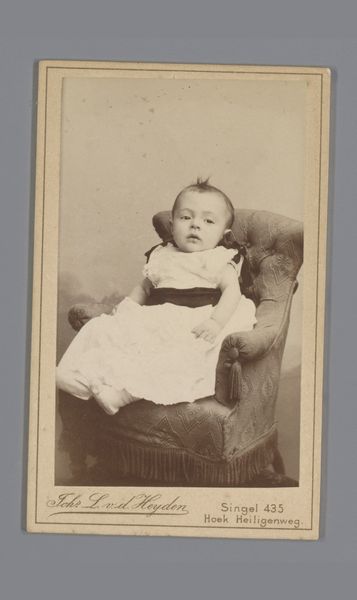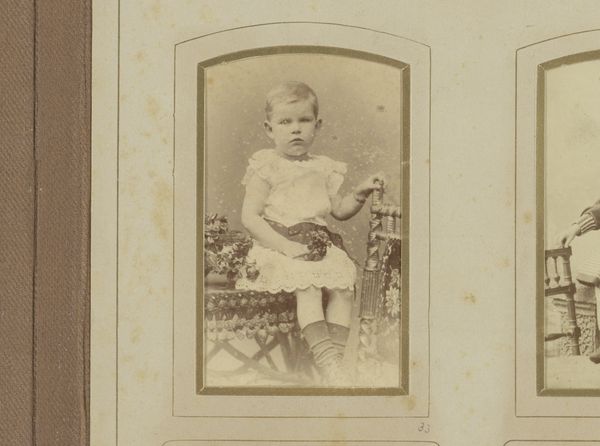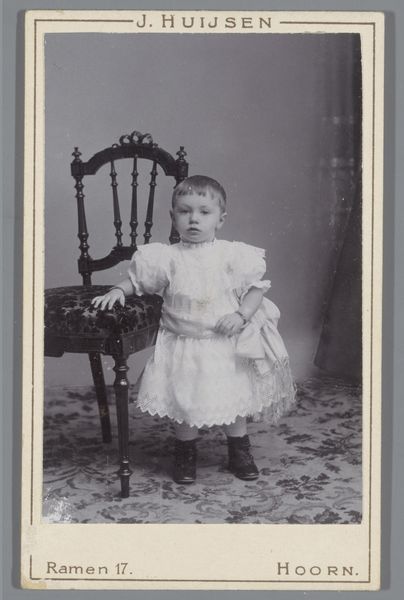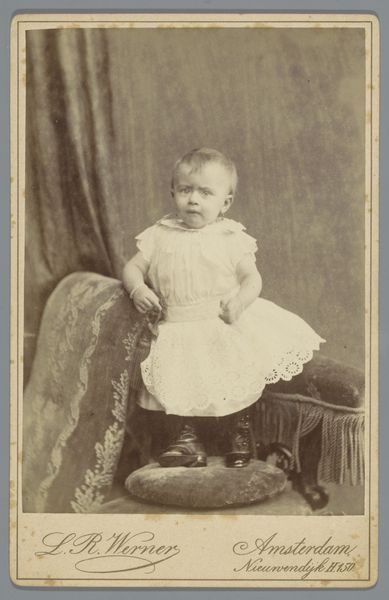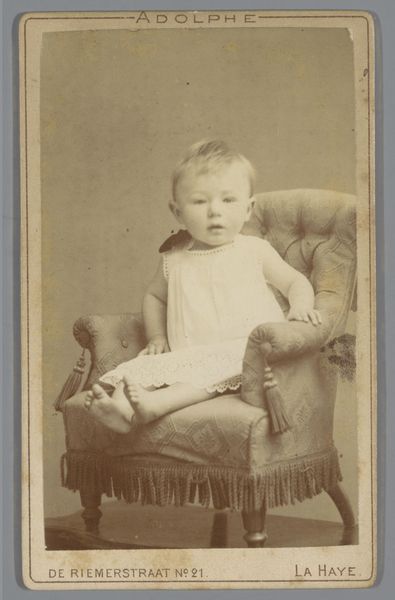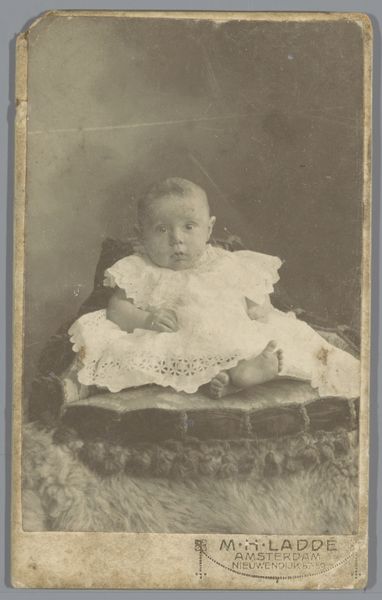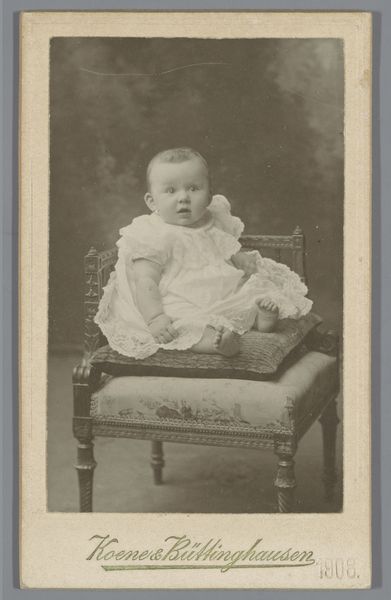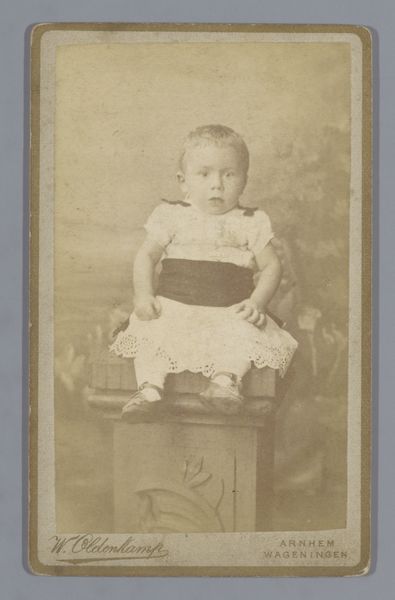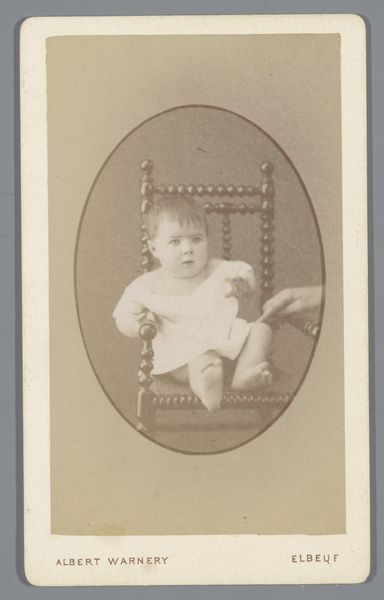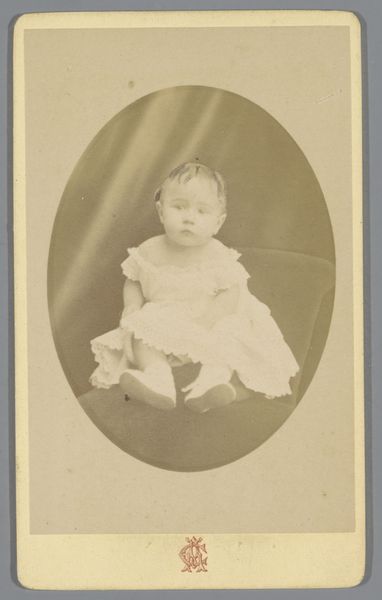
photography, albumen-print
#
portrait
#
photography
#
19th century
#
albumen-print
Dimensions: height 98 mm, width 65 mm
Copyright: Rijks Museum: Open Domain
Curator: This albumen print, taken sometime between 1861 and 1896 by Louis Robert Werner, is titled "Portrait of an Unknown Baby." What strikes you about this image? Editor: The sheer precariousness of the scene is what gets me. That tiny figure, perched rather unsteadily atop a book on a tasseled chair…it feels almost unsettling, a fragile power dynamic somehow captured. Curator: Precisely. Consider how these photographic studios, though seemingly documenting a life stage, also served specific social functions. There was an inherent power imbalance present between the photographer and the subject. It makes me consider ideas of representation, of the subject and their agency, even in infancy. Who had the power in that context and what decisions did they take? Editor: Symbolically, that elevation seems intentional. Placing the child upon the book…are we suggesting inherited privilege? Future erudition? And those somewhat formal boots—heavy visual anchors—create a strong vertical counterpoint to the baby’s delicate features. Is that an intentional representation? Curator: We can infer that that baby, or rather the parents, belonged to the bourgeoise society. And speaking of symbolism, notice those bands on each arm. Were they purely decorative? Or did they hold deeper significance, hinting perhaps at protection, commemoration, a hidden history embedded within such seemingly simple imagery? Editor: Or even perhaps mourning bands in a family where infant mortality rates were shockingly high at the time. What I find enduring is the way this stiff, formal pose attempts to freeze a transient moment, when really all it does is highlight the unrelenting passage of time and how those dynamics shift through the years and centuries. Curator: Indeed, what seems innocuous holds complex narratives—of social mobility, class identity, parental expectation—resonating through the very texture of the print itself. These photographs ask critical questions regarding power and image-making within the constraints of photographic studios. Editor: Ultimately, it reminds me how portraits—however quaint—can reveal unexpected facets of societal memory, and that visual vocabulary lingers far beyond a single lifetime.
Comments
No comments
Be the first to comment and join the conversation on the ultimate creative platform.

